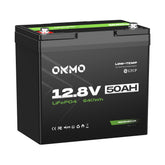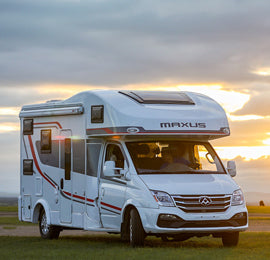Complete Guide to Installing a Trolling Motor on a Kayak

Kayak fishing is beloved for its flexibility and affordability, but the physical strain of paddling often limits exploration. Adding a trolling motor has become a popular solution to enhance efficiency. Drawing from Reddit user discussions and real-world experience, this guide provides a systematic approach to installation and equipment selection, helping you build a reliable, motorized kayak.
1. Pre-Installation Assessment
1.1 Kayak Compatibility Check
Not all kayaks are suitable for motor installation. Verify the following:
-
Structural Integrity: Check for pre-drilled mounting holes (e.g., transducer mounts) or reinforced areas (common on fishing-specific models).
-
Weight Capacity: Ensure the combined weight of the motor and battery does not exceed 20% of the kayak’s max load. For example, a 12V 30Ah LiFePO4 battery (~3.5kg) and a motor (~7kg) total ~10kg.
-
Space Planning: Reserve a dry, secure compartment for the battery (ideally the central hatch) to prevent water exposure.
1.2 Legal and Safety Compliance
Some regions require motorized kayaks to be registered as boats. Research local regulations and ensure waterproof electrical connections with circuit breakers.

2. Trolling Motor Selection Guide
2.1 Thrust and Voltage Requirements
-
Thrust Formula: Kayak weight (lbs) ÷ 100 = Minimum thrust (lbs). For a 300-lb kayak, aim for 5-6 lbs of thrust to counter currents.
-
Voltage: 12V systems suit short trips, while 24V/36V systems offer longer runtime. Higher voltage reduces energy consumption for the same thrust.
2.2 Mounting Styles Comparison
| Type | Pros | Cons | Best For |
|---|---|---|---|
| Transom Mount | Easy installation | Less responsive steering | Small to mid-sized kayaks |
| Side-Mount Bracket | Adjustable angle | Requires extra hardware | Inflatable/kayaks without transoms |
| Bow-Mount | High efficiency, quiet | Expensive modification | Premium fishing kayaks |
2.3 Recommended Models
-
Budget: Newport Vessels NK180S (12V/18 lbs thrust, $150) for kayaks under 16 ft.
-
Mid-Range: Minn Kota Endura C2 30 (12V/30 lbs thrust, $200) with digital speed control.
-
Premium: Bixpy J-1 (24V/22 lbs thrust, $900), modular and solar-compatible.

3. LiFePO4 Battery Selection
3.1 Capacity and Runtime Calculation
-
Formula: Battery capacity (Ah) ÷ Motor max current (A) = Theoretical runtime (hours). Example: 30Ah battery ÷ 10A motor = 3 hours.
-
Buffer: Plan for 70% of theoretical runtime to avoid stranding.
3.2 Key Specifications
-
Cycle Life: LiFePO4 batteries last 2,000+ cycles (vs. 300 for lead-acid). Prioritize 2,000+ cycle models.
-
Discharge Rate: Ensure continuous discharge current ≥ motor’s max draw (e.g., 30A motor needs 30A+ battery).
-
BMS Protection: Mandatory for overcharge/discharge/short-circuit protection.
3.3 Top Battery Picks
-
Ampere Time 12V 20Ah ($169): IP65 waterproof, 100A peak current, ideal for 12V motors under 30 lbs.
-
OKMO 12V 50Ah ($109): Lightweight (5.4kg), supports 12V setups via series wiring.
-
ECO-WORTHY 24V 50Ah ($699): Built-in USB ports, perfect for extended trips.


4. Installation Steps and Optimization
4.1 Mounting the Motor
-
Transom Mount: Secure with stainless U-bolts and rubber padding to prevent hull scratches.
-
Side-Mount: Use adjustable brackets like YakAttack SwitchBlade for 360° positioning.
4.2 Wiring the System
-
Cabling: Use 10-12AWG waterproof silicone wires. Label positive/negative terminals with heat-shrink tubing.
-
Safety: Install a 30A circuit breaker (e.g., Bussmann CB285) on the positive line for emergency cutoff.
4.3 Balancing Weight Distribution
-
Battery Placement: Position near the kayak’s center of gravity (under the seat). Add counterweights if needed.
-
Testing: Conduct low-speed trials to check steering stability. Adjust motor angle or battery placement if the kayak drifts.
5. Maintenance and Upgrades
-
Routine Care: Rinse the motor shaft with freshwater after use. Store batteries at 50% charge if unused for months.
-
Upgrades: Add a PWM speed controller (e.g., Trolling Motor Power Center) for smooth acceleration or a Bluetooth module (Dakota Lithium app) for real-time battery monitoring.
-
Performance Tracking: Use a GPS device (e.g., Garmin Striker 4) to log speed and range, optimizing cruising efficiency.
By carefully selecting components and following this guide, a trolling motor can extend your kayak’s range by 60% or more. Paired with a LiFePO4 battery, you can achieve 12+ miles (20+ km) on a single charge. Always test your setup in calm waters first to master motorized navigation, balancing efficiency and safety for the ultimate kayak fishing experience.









